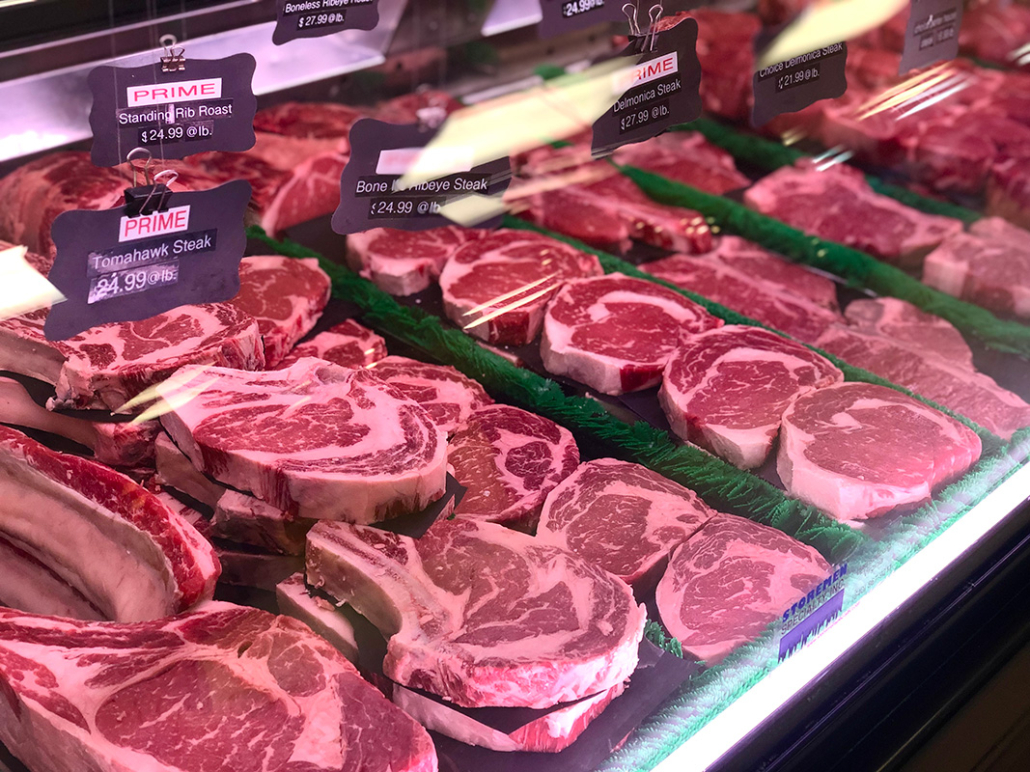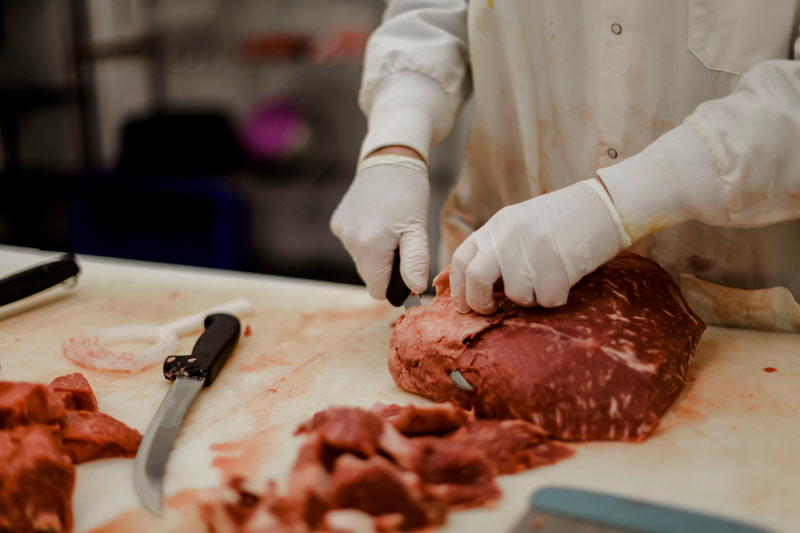Check Out the Local Taste at Bagley Farms Meat Market Edwardsville IL: Fresh and Delicious
Check Out the Local Taste at Bagley Farms Meat Market Edwardsville IL: Fresh and Delicious
Blog Article
Reveal the Art of the Butcher's Cut in a Modern Meat Market
In the ever-evolving landscape of modern-day meat markets, the butcher's cut has actually transcended its standard roots, merging old-time workmanship with contemporary practices. bagley farms meat market edwardsville il. Today's butchers are not simply processors of meat; they are well-informed artisans that highlight sustainability and honest sourcing. Their competence in picking and preparing cuts tailored to certain cooking requirements offers an unrivaled dining experience. Yet, what absolutely establishes the contemporary butcher apart is their capability to create a deeper link between customers and the origins of their meat. Exactly how do these masters balance tradition with innovation, and what effects does this have for the future of meat consumption?
Evolution of Butchery Methods

The mid-20th century saw butchery methods additionally fine-tuned by scientific understandings right into muscle mass biology and meat aging, improving both tenderness and preference. Advancements like vacuum packaging and refrigeration expanded product shelf-life, allowing butchers to expand offerings and boost high quality control. This period additionally marked the rise of customized tools, such as band saws and meat slicers, which raised accuracy and efficiency in meat handling.
Digital systems now help in monitoring animal provenance and maximizing cuts to meet certain consumer preferences. Furthermore, a rebirth in artisanal butchery has emerged, blending typical skills with contemporary expertise to cater to consumers looking for moral and sustainable meat choices.

Understanding Meat Cuts

Comprehending the ins and outs of meat cuts is necessary for both butchers and consumers looking for high quality and value. Each cut comes from a various component of the animal, imparting unique flavors, structures, and cooking methods. Proficiency of these differences not only enhances cooking experiences but additionally optimizes the energy of each carcass. For butchers, precise cuts reflect skill and regard for the craft, making certain minimal waste and optimal return.
The primary classifications of meat cuts consist of primitive, sub-primal, and retail cuts. Primal cuts, such as the loin, rib, and chuck, are the big sections initially separated from the carcass. Butchers then break these down even more right into sub-primal cuts, before lastly creating retail cuts available to customers, like ribeye or tenderloin. Each stage needs cautious attention to anatomical framework and muscle composition.
Comprehending muscle structure is essential; muscular tissues made use of more often by the pet tend to be harder and are best suited for slow food preparation methods, while less-used muscle mass, like those discovered in the loin, are more tender and perfect for barbecuing or roasting. Experience with these distinctions equips consumers to make informed selections, hop over to these guys enhancing their culinary endeavors.
Choosing High Quality Meat
Picking the ideal meat involves greater than just picking a visually enticing item from the screen. The art of picking quality meat calls for a critical eye and knowledge of details qualities that symbolize freshness and quality. First of all, take note of the shade; beef needs to have an intense, cherry-red hue, while lamb should exhibit a soft pink tone, and pork a pale pink. This shows the meat is fresh and hasn't been subjected to oxygen for also long.
Second of all, take into consideration the marbling, which refers to the white flecks of fat within the muscle. Appropriate marbling is a key indicator of inflammation and flavor, as it melts during food preparation, enhancing the meat's juiciness. Remember, greater marbling usually associates with exceptional quality cuts, such as USDA Prime.
Texture is another important aspect; meat must really feel strong to the touch, not slimed or overly soft. In addition, be mindful of the aroma. Fresh meat must have a clean, neutral odor, without any sour or repulsive odors.
Pairing Cuts With Food Preparation Methods
Successfully pairing cuts of meat with the ideal cooking approaches is essential for attaining ideal flavor and structure. Different cuts differ in inflammation, marbling, and connective tissue web content, each needing specific methods to open their capacity. For instance, tender cuts like filet mignon and ribeye, with their fundamental marbling, gain from high-heat, quick-cooking methods such as grilling or pan-searing. These methods enhance the meat's all-natural tastes and make certain a juicy finish.
On the other hand, harder cuts like brisket and chuck roast are rich in collagen, which breaks down right into jelly when cooked slowly. These cuts are perfect for braising or slow-moving roasting, allowing the meat to tenderize gradually and create deep, complex flavors. Cuts such as brief ribs and pork shoulder fare well with slow-cooking approaches, where Extra resources extended cooking times change their robust structures right into delicious recipes.
Lamb shanks and oxtail, which require prolonged cooking to soften, are excellent candidates for stewing or slow simmering. These approaches coax out rich, hearty tastes while preserving wetness. By recognizing the distinct features of each cut, cooks and home cooks alike can raise their culinary developments, navigate to this site making sure each dish is both satisfying and remarkable.
The Butcher's Duty Today
Navigating the developing landscape of the modern-day meat market, the butcher's duty today extends past mere prep work of cuts. Contemporary butchers are cooking craftsmens, teachers, and advocates for sustainable practices. They connect the space in between the ranch and the fork by making certain moral sourcing, comprehending animal husbandry, and focusing on openness in the supply chain. This shift reflects the expanding consumer demand for top quality over quantity, where provenance and pet welfare are extremely important.
In addition to crafting precise cuts, butchers now engage straight with clients, offering cooking recommendations and tailoring options to match specific demands and choices. Their knowledge in meat aging, marbling, and taste profiles encourages consumers to make informed choices, enhancing their cooking experiences. This individualized service exemplifies the butcher's developing function as a trusted expert in the kitchen.
Furthermore, butchers are pivotal in lessening waste, using entire animals to develop diverse products such as sausages and supplies - bagley farms meat market edwardsville il. This thorough method not just appreciates the animal but also straightens with modern sustainability objectives. By doing this, the modern-day butcher symbolizes both custom and development, adjusting to an ever-changing market while preserving the virtuosity and integrity of their craft

Verdict
Proficiency in comprehending diverse meat cuts and top quality indications equips butchers to supply enlightened referrals, aligning particular cuts with optimum cooking approaches. By recognizing historic methods while welcoming modern needs, the butcher's function remains important in today's innovative meat market.
Report this page